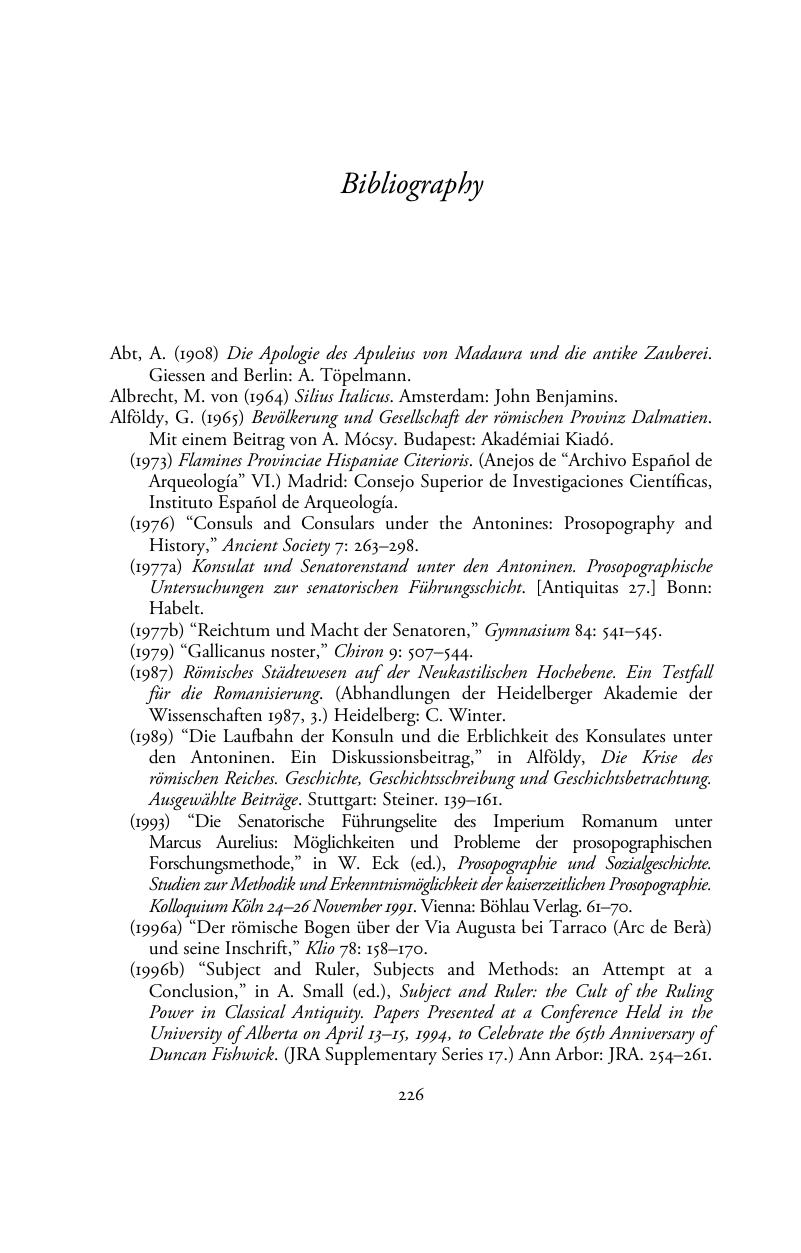Bibliography
Published online by Cambridge University Press: 06 July 2010
Summary

- Type
- Chapter
- Information
- The Religion of Senators in the Roman EmpirePower and the Beyond, pp. 226 - 252Publisher: Cambridge University PressPrint publication year: 2010

